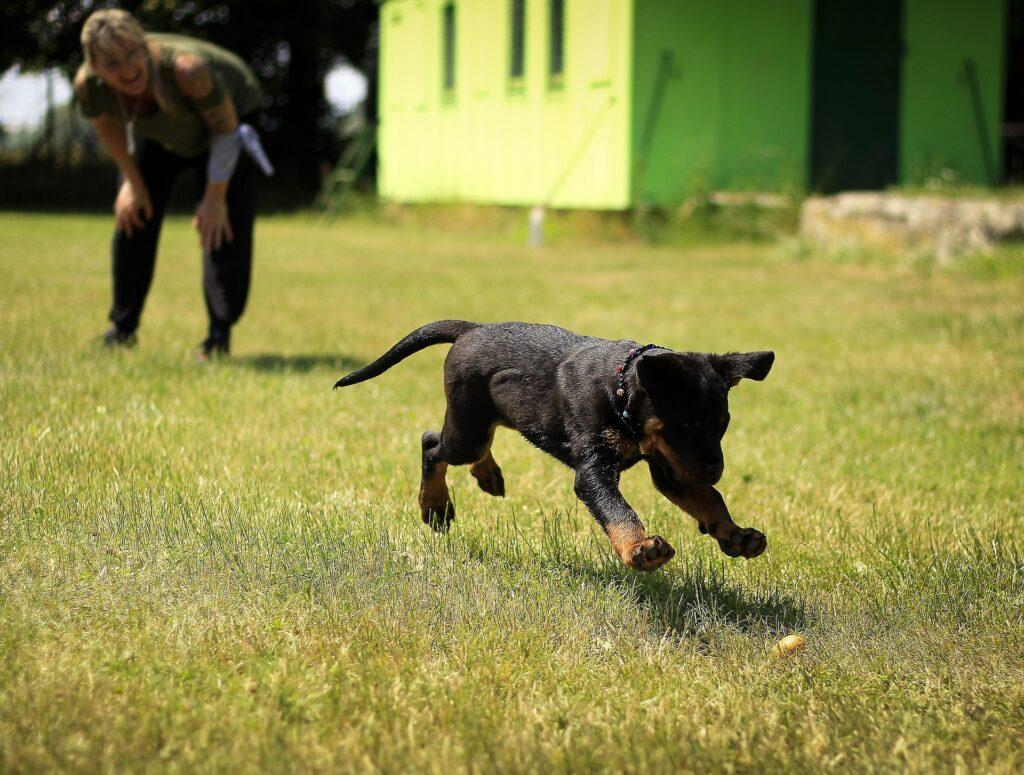First and foremost, puppies should not limp! Puppy limping or lameness is walking with difficulty because of pain in some part of the body. Various reasons can cause limping in puppies.
The best resource for determining the root of the problem is your veterinarian (vet), but we are confident that most responsible owners want to know a little bit more about the condition beforehand. That’s why we are here to provide some valuable information.
Firstly you need to distinguish between the sudden onset of limping and gradual onset. Have you noticed your puppy’s walk differs from what it used to but it’s still not that obvious? – The onset is probably gradual.
The type of onset is probably the first question any vet will ask to narrow down the possible scenarios.
Causes of Puppy Limping?
Unfortunately, vets encounter limping puppies with anything from traumatic injury to underlying conditions as the prime reason. To explain the plausible triggers they need to be divided into a few categories:
Joint Disease
Most problems affecting the joints in the dog’s body come on gradually as a result of continuous wearing and tearing of these musculoskeletal parts. These conditions can however show the first signs in puppyhood.
Some of these conditions include:
- Hip dysplasia
- Elbow dysplasia
- OCD (Osteochondritis dissecans)
- Spinal malformation
Breeds that are commonly affected by conditions like hip dysplasia often undergo hip scoring as a puppy (16wks for PennHip and 2yrs for OFA). These tests help identify the early signs of hip dysplasia and in the case of the PennHip, the likelihood of developing hip dysplasia and consequentially arthritis through life.
Almost all conditions affecting the joints in dogs have the potential of becoming chronic. They may require lifelong therapy, weight management, and exercise management. The intensity of the symptoms is the main factor in choosing the therapeutic approach.
Traumatic Injuries
Injuries are probably the most obvious causes because they mostly appear suddenly and the owners are frequent witnesses of the accidents that led to the limping episode.

Depending on the severity of the injury you can decide whether to rush to the vet or not. However, there have been cases when a simple trauma turned out to be something a lot more serious, especially in puppies.
If there is no obvious injury requiring vet assistance (e.g. bent bones, swelling, abnormal looking joints, lacerations), the general rule is to wait for about 15 minutes after your dog becomes lame. Every dog, especially puppies, will cry like children right after the injury as some sort of cry for help. That behavior usually lasts for 5 minutes and they start acting normal right after. If however, your puppy still has a limp, no matter how small, you need to take a trip to your vet.
Puppies may be exposed to many types of injuries like sports injuries, car accidents, contusions, etc. Trauma can lead to fractures, dislocations, sprains, spinal injuries, ligament tears, etc. Sometimes the dogs show moderate limping and sometimes the leg can’t take any weight at all.
Diseases of the Bones
Large breed puppies develop conditions that cause limping while they are in the active growth phase. Both Panosteitis and hypertrophic osteodystrophy make walking very painful for them so you will most likely need to get the puppy checked and treated on time. These conditions are typically self-limiting as your puppy finishes growing.
Injuries of the Paw
If your puppy injures its paw ,or gets a bindi (prickle) stuck, it’s only natural that they are reluctant to lower the paw to the ground. Pieces of glass, nails, sticks, thorns, bindis, and any other foreign body can damage the puppy’s paws in a second.
It’s especially painful when the object that caused the damage remains inside the skin and inner tissues. If left there your puppy can develop an infection of the paw. Sometimes owners take foreign bodies out on their own when they are still visible.
Frostbites, burns, insect bites, lacerations, and broken toenails can also cause a puppy to limp on one or more legs. Puppies with injured paws will lick the painful area intensively so that’s one of the signs to look out for.
When to Head to Your Veterinarian
It’s an unwritten rule that most injuries causing limping in your puppy happen out of regular office hours. That means that if you rush to the emergency room it will cost a lot more.
Although most limping cases don’t require immediate veterinary attention it’s best to play it safe every time. Veterinary care is necessary any time when the lameness appears suddenly and persists for more than 10-15 minutes.
Besides the timing, an emergency can be considered any case of limping when the dog has:
- Swollen limb/limbs
- Dangling limb (meaning dislocation)
- Obvious break of a bone
- An unnatural angle of the limb
- High temperature
- Swelling
- Open laceration
Start with giving your vet office a call, explain the symptoms, and always listen to the suggestions of the professionals!
If you’d like to know more about exercising your puppy, check out our puppy exercise guidelines.

